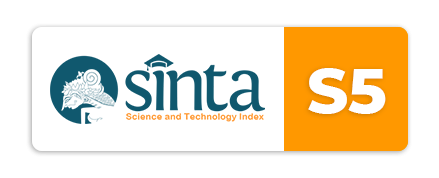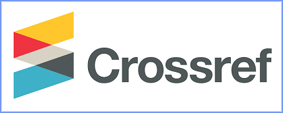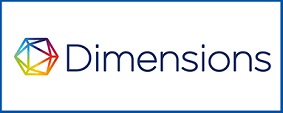Analysis of Fuel Distribution at Pertashop at PT XYZ
DOI:
https://doi.org/10.31004/jestm.v5i1.219Keywords:
Distribution, Nearest Neighbor, Tanker TruckAbstract
PT. XYZ is a company involved in various activities related to fuel oil (BBM), such as receiving, storing, and distributing it to gas
stations or Pertashop. The process of sending fuel from PT. XYZ to Pertashop is carried out using tanker trucks. One of the problems
faced is the limited number of tanker trucks, which can cause delays in fuel delivery, so that the distribution schedule cannot be met
properly. In addition, this also reduces the time available for vehicle maintenance and increases the risk of fatigue for tanker truck drivers, which can lead to work accidents. This study aims to find an effective fuel delivery route so that travel time is shorter, so that fuel delivery to various locations can run well and on time. Using the Nearest Neighbor Method, this study can produce a more efficient solution in terms of saving distance when compared to the route currently used by the company. The proposed route with the Nearest Neighbor method has a total distance of 5268.3 km, which is a decrease of 14.49% from the current total distance. The Nearest Neighbor method can also result in savings in the number of tanker trucks, which initially used 119 trucks for 14 days, consisting of 88 tanker trucks with a capacity of 8,000 L and 31 tanker trucks with a capacity of 16,000 L. 41 tanker trucks with a capacity of 16,000 L, which has a savings in the number of tankers of 13.44%
References
Alexander, Achmad Faja Perdana, and Nano Koes Ardhiyanto. 2024. “Analysis of Fuel Distribution Routes to Pertashop at the Palembang Integrated Terminal.” Scientia Scientific Journal of Science and Technology 2(6): 118–22.
Bakhtiar, Arfan, Shara Bilqis Akhlissa, Hery Suliantoro, Zainal Fanani Rosyada, and Zainal Fanani Rosyada. 2020. “Determination of the Number of Tanker Truck Needs in the Fuel Distribution Process at PT Pertamina (Persero) Integrated Terminal Semarang.” Journal of Industrial Engineering, Faculty of Industrial Engineering, UPN Veteran Yogyakarta 7(1): 1–3.
Eka Wisnu Wardhana, and Oki Anita Candra Dewi. 2021. “Optimizing the Number of Vehicles and Distribution Routes for Election Logistics in Kediri Regency During the Pandemic.” Electoral Governance Journal of Indonesian Election Governance 3(1): 1–25.
Erwin Indra Prasetyo, and Indrianawati Usman. 2023. “Optimization of the Number and Location of Subsidized Fertilizer Distribution Warehouses in East Java Due to Changes in Government Regulations.” Journal of Management and Innovation (MANOVA) 6(1): 105–21.
Kasih, Puji Handayani, and Yasmin Maulidina. 2023. “Determination of Delivery Routes to Minimize Transportation Distance Using the Saving Matrix Method.” INTECH Journal of Industrial Engineering, Serang Raya University 9(1): 53–62.
Kristina, Sonna, and Wasingten Wasingten. 2019. “Application of Cluster Method on Algorithm of Determining Mode and Route to Minimize Transportation Cost.” Telematics Journal 13(2): 85–92.
Lestari, Putri, Abdurrozaq Hasibuan, and Bonar Harahap. 2022. “Analysis of Distribution Route Determination Using the Nearest Neighbor Method at PT Medan Juta Rasa Tanjung Morawa.” Factory Journal of Industry, Management and Industrial Systems Engineering 1(1): 26–32.
Method, Implementation, Saving Matrix, and Algorithm, Nearest Neighbor, In Determining, Distribution Route, and To Minimize. 2020. “In Determining Distribution Route To Minimize Cost.” 4(1): 62–77.
Nurwidiana;, Faidatun Munawaroh; Irwan Sukendar; 2018. “Implementation of Vehicle Routing Problem With Multiple Trips And Intermediate Facility (Vrpmtif) On Waste Transportation Route.” : 172–98.
Pokhrel, Sakinah. 2024. “No TitleΕΛΕΝΗ.” Αγαη 15(1): 37–48.
Putri, Anhesa Nialanov. 2022. “Optimizing the Number of Tank Cars in Fuel Distribution Using Cluster and Proportional Methods at PT Pertamina Integrated Terminal.” (December 2022).
Rachman Afandy, Fachri, and Reza Fayaqun. 2023. “Optimizing Goods Distribution Using the Clarke and Wright Method (Saving Heuristic) and the Nearest Neighbor Method.” Journal of Locus Research and Community Service 2(8): 833–45.
Rinaldo, Desril, Benny Rusli, and Mahlil Adriaman. 2023. “Implementation of the Pertashop Cooperation Agreement with Business Partners and Efforts to Resolve Disputes Between Parties.” Sakato Law Journal 1(1): 87.
Sari, Rahayu Mayang. 2024. Clustering Method for Dangerous Diseases. Medan.
Satria Prawira, Yudha. 2023. “Analysis of Tank Car Needs in the Process of Distribution of Fuel At Spotting Stations At Integrated Terminal Pt. Xyz Analysis of Tank Car Needs in the Process of Distribution of Fuel At Gas Stations At Integrated Terminal Pt. Xyz.” Journal of Social and Economics Research 5(2): 2122–32.
Sembiring, Julia Br, Hotler Manurung, and Anton Sihombing. 2023. “Grouping of Car Credit Payment Arrears Data Using Clustering Method (Case Study: CV Citra Kencana Mobil).” Jayakarta Informatics Management Journal 3(July): 275–91.
Talakua, MW, ZA Leleury, and AW Talluta. 2017. “Cluster Analysis By Using K-Means Method for Grouping of District / City in Maluku Province Industrial Based on Indicators of Maluku Dev.” Journal of Applied Mathematics 11(2): 119–28.
Wijaya, Benny, Tresna Maulana Fahrudin, and Aryo Nugroho. 2019. “Indonesia Using Descriptive Statistics Methods and K-Means Clustering ARTICLEINFO ABSTRACT.” JurnalMantik 3(2): 1–9.
Yuna, Yunanik, and Muhammad Siddiq Abdillah. 2023. “Determining The Need of Tank Cars In The Fuel Distribution Process to Pertashop at XYZ Company.” Jurnal Rekayasa Sistem & Industri (JRSI) 10(01): 39
Downloads
Published
How to Cite
Issue
Section
License
Copyright (c) 2025 Arifah Candra Kirana, Nurwidiana

This work is licensed under a Creative Commons Attribution-ShareAlike 4.0 International License.










